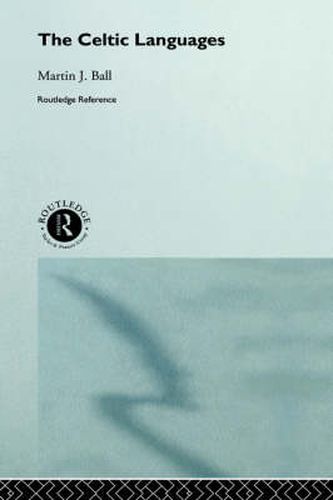Readings Newsletter
Become a Readings Member to make your shopping experience even easier.
Sign in or sign up for free!
You’re not far away from qualifying for FREE standard shipping within Australia
You’ve qualified for FREE standard shipping within Australia
The cart is loading…






New in paperback, The Celtic Languages describes in depth all the Celtic languages from historical, structural and sociolinguistic perspectives, with individual chapters on Irish, Scottish Gaelic, Manx, Welsh, Breton and Cornish. This comprehensive volume is arranged in four parts for ease of reference, reflecting the most important features of the language family and aiding cross-linguistic comparison. The first part covers the origin and history of the Celtic languages, including their spread and retreat, present-day distribution and a survey of the extant and recently extant languages. Parts II and III devote whole chapters to describing the structural details of each of the languages, including phonology, morphology, syntax, dialectology and lexis. The final part provides wide-ranging sociolinguistic detail, such as identifying areas of usage, maintenance and each language’s prospects for survival. This is an invaluable reference tool for both students and teachers of linguistics, especially those with an interest in typology, language universals and the unique sociolinguistic position which the Celtic languages occupy.
$9.00 standard shipping within Australia
FREE standard shipping within Australia for orders over $100.00
Express & International shipping calculated at checkout
New in paperback, The Celtic Languages describes in depth all the Celtic languages from historical, structural and sociolinguistic perspectives, with individual chapters on Irish, Scottish Gaelic, Manx, Welsh, Breton and Cornish. This comprehensive volume is arranged in four parts for ease of reference, reflecting the most important features of the language family and aiding cross-linguistic comparison. The first part covers the origin and history of the Celtic languages, including their spread and retreat, present-day distribution and a survey of the extant and recently extant languages. Parts II and III devote whole chapters to describing the structural details of each of the languages, including phonology, morphology, syntax, dialectology and lexis. The final part provides wide-ranging sociolinguistic detail, such as identifying areas of usage, maintenance and each language’s prospects for survival. This is an invaluable reference tool for both students and teachers of linguistics, especially those with an interest in typology, language universals and the unique sociolinguistic position which the Celtic languages occupy.